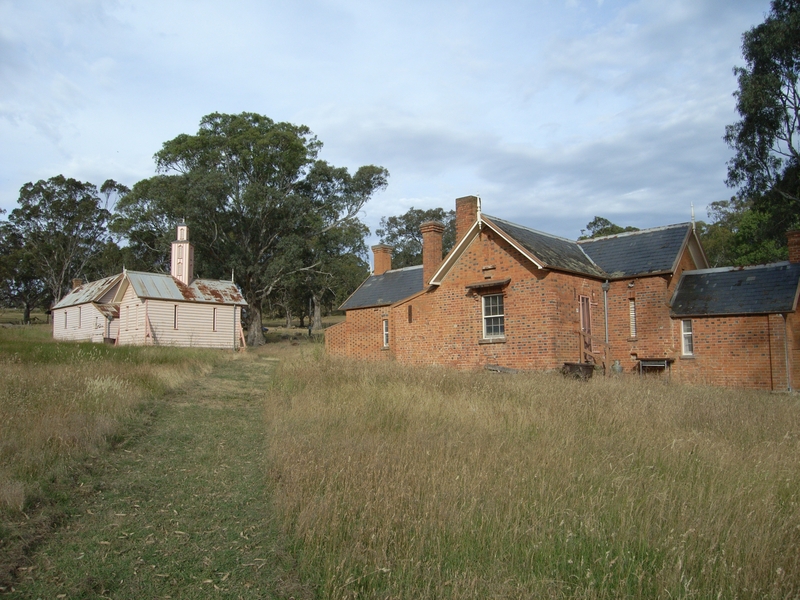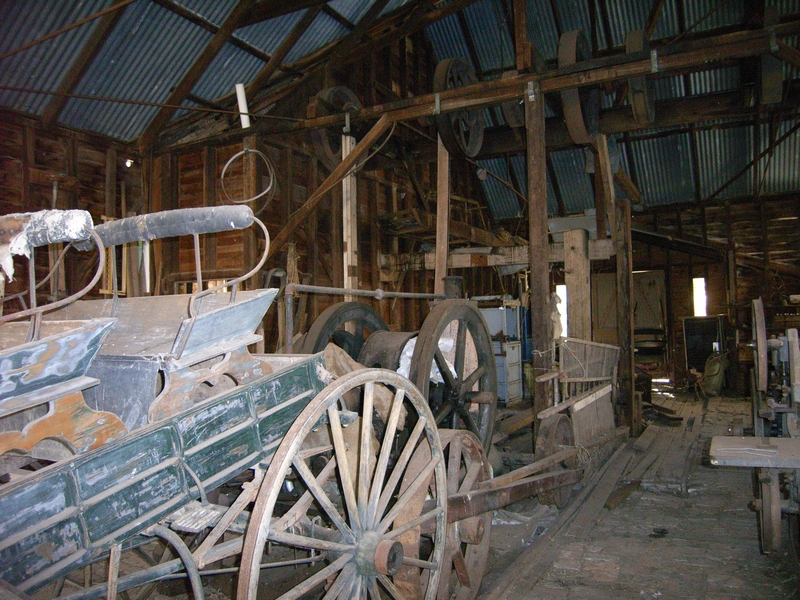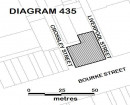WARROCK
826 WARROCK ROAD WARROCK, GLENELG SHIRE
-
Add to tour
You must log in to do that.
-
Share
-
Shortlist place
You must log in to do that.
- Download report
































Statement of Significance
-
-
WARROCK - History
Warrock is located near Casterton in the Western District and is a pastoral complex dating from the 1840s. It
was settled by Scottish cabinet maker George Robertson, who purposefully educated himself in many
aspects of agriculture and architecture before immigrating to Victoria in 1840. He gained experience by
working for his cousin John Robertson at Wando Vale and acquired the license for nearby Warrock station in
1844. He proceeded to put into practice his agricultural, architectural and social ideals, inspired by the
agrarian and egalitarian reforms of nineteenth century Britain. Before his death in 1890, Robertson had built
a small largely self?]sufficient village consisting of fifty?]seven mostly timber buildings arranged regularly
around an area known as 'the Green'. Robertson had no children, and after his death the property passed to
a nephew, George Robertson Patterson. Warrock remained in the Patterson family for five generations, until
1992. It has recently changed hands and is in private ownership.
KEY REFERENCES USED TO PREPARE ASSESSMENT
Huddle, Lorraine (1992) Conservation Study, Warrock (5 volumes)
Huddle, Lorraine (1992) Inventory of objects and fixtures, Warrock (42 volumes)
Summerton, Michelle (1997) Warrock, Heritage Council Victoria
WARROCK - Assessment Against Criteria
Criterion
WHAT IS SIGNIFICANT?
Warrock including the land, all buildings (exteriors, interiors and fixtures), trees, garden and landscape
elements, brick lined wells and other features. The registration also includes all fixtures attached to the
buildings at the time of registration.
HOW IS IT SIGNIFICANT?
Warrock is of historical and architectural significance to the State of Victoria. It satisfies the following
criterion for inclusion in the Victorian Heritage Register:
Criterion A
Importance to the course, or pattern, of Victoria's cultural history.
Criterion B
Possession of uncommon, rare or endangered aspects of Victoria's cultural history.
Criterion D
Importance in demonstrating the principal characteristics of a class of cultural places and objects.
WARROCK - Permit Exemptions
General Exemptions:General exemptions apply to all places and objects included in the Victorian Heritage Register (VHR). General exemptions have been designed to allow everyday activities, maintenance and changes to your property, which don’t harm its cultural heritage significance, to proceed without the need to obtain approvals under the Heritage Act 2017.Places of worship: In some circumstances, you can alter a place of worship to accommodate religious practices without a permit, but you must notify the Executive Director of Heritage Victoria before you start the works or activities at least 20 business days before the works or activities are to commence.Subdivision/consolidation: Permit exemptions exist for some subdivisions and consolidations. If the subdivision or consolidation is in accordance with a planning permit granted under Part 4 of the Planning and Environment Act 1987 and the application for the planning permit was referred to the Executive Director of Heritage Victoria as a determining referral authority, a permit is not required.Specific exemptions may also apply to your registered place or object. If applicable, these are listed below. Specific exemptions are tailored to the conservation and management needs of an individual registered place or object and set out works and activities that are exempt from the requirements of a permit. Specific exemptions prevail if they conflict with general exemptions. Find out more about heritage permit exemptions here.Specific Exemptions:It should be noted that Permit Exemptions can be granted at the time of registration (under s.38 of the
Heritage Act). Permit Exemptions can also be applied for and granted after registration (under s.92 of the
Heritage Act).
General Condition 1
All exempted alterations are to be planned and carried out in a manner which prevents damage to the fabric
of the registered place or object.
General Condition 2
Should it become apparent during further inspection or the carrying out of works that original or previously
hidden or inaccessible details of the place or object are revealed which relate to the significance of the place
or object, then the exemption covering such works shall cease and Heritage Victoria shall be notified as soon
as possible.
General Condition 3
All works should ideally be informed by Conservation Management Plans prepared for the place. The
Executive Director, Heritage Victoria is not bound by any Conservation Management Plan, and permits still
must be obtained for works suggested in any Conservation Management Plan.
General Condition 4
Nothing in this determination prevents the Heritage Council from amending or rescinding all or any of the
permit exemptions.
General Condition 5
Nothing in this determination exempts owners or their agents from the responsibility to seek relevant
planning or building permits from the relevant responsible authority, where applicable.
Specific Permit Exemptions
Maintenance, safety and conservation
All works required to maintain, secure and make safe buildings and structures including the removal of
broken glass, the temporary shuttering of windows and covering of holes as long as this work is
reversible and does not have a detrimental impact on fabric.
Maintenance of a building or other feature to retain its condition without large-scale removal of or
damage to the existing fabric or the large-scale introduction of new materials. Repairs must maximise
protection and retention of fabric and include the conservation of existing details or elements. Any new
materials used for repair must not exacerbate the decay of existing fabric due to chemical
incompatibility, obscure existing fabric or limit access to existing fabric for future maintenance. This
includes:
-Removal of built up earth around the base of the buildings to allow drainage away from the
buildings.
-Replacement of damaged, deteriorated or missing exterior weatherboards, like with like.
o Painting of previously painted surfaces in the same colour provided that preparation or
painting does not remove all early paint finishes or other decorative schemes.
-Replacement of existing services such as cabling, plumbing, wiring and fire services that uses existing
routes, conduits or voids, and does not involve damage to or the removal of significant fabric.
-Removal of non-original items such as wiring, antennae, aerials etc and making good in a manner not
detrimental to the fabric.
-Erecting, repairing and maintaining signage (directional signage, road signs, speed signs). Signage must
be located and be of a suitable size so as not to obscure or damage heritage fabric and must be able to
be later removed without causing damage to the place. The development of signage must be consistent
in the use of format, text, logos, themes and other display materials.
Landscape
-The process of gardening, including mowing, hedge clipping, bedding displays, removal of dead shrubs
and replanting the same species or cultivar, disease and weed control, and maintenance to care for
existing plants.
-Repairs and maintenance to hard landscape elements, such as driveways, paths, gutters, drainage and
irrigation systems, in a manner which preserves the cultural heritage significance of the place.
-The removal or pruning of dead or dangerous trees to maintain safety and to protect buildings and
structures, provided a report is submitted to the Executive Director, Heritage Victoria within 21 days of
completion of works.
-Management of trees in accordance with Australian Standard; Pruning of Amenity Trees AS 4373-2007.
Subsurface works involving the installation, removal or replacement of watering and drainage systems or
services outside the Tree Protection Zone of significant trees in accordance with AS4970.
-Removal of plants listed as noxious weeds in the Catchment and Land Protection Act 1994.
-Vegetation protection and management of possums and vermin.
Agricultural activities
-Cultivation, cropping, harvesting, grazing stock, and other agricultural, and pastoral activities.
-Maintenance, repair or removal of any non-original fence, gate, dam or structure necessary for the
continuation of agricultural or pastoral activities.
Fire suppression duties
-Fire suppression and fire fighting duties provided the works do not involve the removal or destruction of
any significant features.
-Fire suppression activities such as fuel reduction burns, and fire control line construction, provided all
significant fabric is appropriately recognised and protected. Note: Fire management authorities should
be aware of the location, extent and significance of heritage places when developing fire suppression
and fire fighting strategies. The importance of places listed in the Heritage Register must be considered
when strategies for fire suppression and management are being developed.
Public Safety and Security
-Public safety and security activities provided the works do not involve the removal or destruction of any
significant fabric.
-The erection of temporary security fencing, scaffolding, hoardings or surveillance systems to prevent
unauthorised access or secure public safety which will not adversely affect significant fabric of the place
including archaeological features
-Development including emergency stabilisation necessary to secure safety where a site feature has been
irreparably damaged or destabilised and represents a safety risk to its users or the public. Note: Urgent
or emergency site works are to be undertaken by an appropriately qualified specialist such as a
structural engineer, or other heritage professional.
WARROCK - Permit Exemption Policy
Preamble
The purpose of the Permit Policy is to assist when considering or making decisions regarding works to a
registered place. It is recommended that any proposed works be discussed with an officer of Heritage
Victoria prior to making a permit application. Discussing proposed works will assist in answering questions
the owner may have and aid any decisions regarding works to the place.
The extent of registration of Warrock in the Victorian Heritage Register affects the whole place shown on
Diagram 295 including the land, all buildings (exteriors, interiors and fixtures), roads, trees, landscape
elements and other features. The registration also includes all fixtures attached to the building at the time
of registration.
Under the Heritage Act 2017 a person must not remove or demolish, damage or despoil,develop or alter or excavate, relocate or disturb the position of any part of a registered place or object
without approval. It is acknowledged, however, that alterations and other works may be required to keep
places and objects in good repair and adapt them for use into the future.
If a person wishes to undertake works or activities in relation to a registered place or registered object, they
must apply to the Executive Director, Heritage Victoria for a permit. The purpose of a permit is to enable
appropriate change to a place and to effectively manage adverse impacts on the cultural heritage
significance of a place as a consequence of change. If an owner is uncertain whether a heritage permit is
required, it is recommended that Heritage Victoria be contacted.
Permits are required for anything which alters the place or object, unless a permit exemption is granted.
Permit exemptions usually cover routine maintenance and upkeep issues faced by owners as well as minor
works or works to the elements of the place or object that are not significant. They may include appropriate
works that are specified in a conservation management plan. Permit exemptions can be granted at the time
of registration (under s.49(3) of the Heritage Act) or after registration (under s.92) of the Heritage Act). It
should be noted that the addition of new buildings to the registered place, as well as alterations to the
interior and exterior of existing buildings requires a permit, unless a specific permit exemption is granted.
Conservation management plans
A Conservation Study (five volumes) was prepared for Warrock in 1992 by Lorraine Huddle. An inventory of
objects and fixtures (42 volumes) was prepared at the same time. All works to the place should generally be
carried out in accordance with the Conservation Study. It is now 25 years since the Conservation Study was
completed and it is recommended that it is updated.
Aboriginal cultural heritage
If works are proposed which have the potential to disturb or have an impact on Aboriginal cultural heritage it
is necessary to contact Aboriginal Victoria to ascertain any requirements under the Aboriginal Heritage Act
2006. If any Aboriginal cultural heritage is discovered or exposed at any time it is necessary to immediately
contact Aboriginal Victoria to ascertain requirements under the Aboriginal Heritage Act 2006.
Other approvals
Please be aware that approval from other authorities (such as local government) may be required to
undertake works.
Archaeology
Any works that may affect historical archaeological features, deposits or artefacts at the place is likely to
require a permit, permit exemption or consent. Advice should be sought from the Archaeology Team at
Heritage Victoria.
Cultural heritage significance
Overview of significance
The cultural heritage significance of Warrock lies in its significance as the most comprehensive and intact
pastoral property of its kind in Victoria.
-
-
-
-
-
WARROCK
 Victorian Heritage Register H0295
Victorian Heritage Register H0295 -
WARROCK HOMESTEAD, CASTERTON
 Victorian Heritage Inventory
Victorian Heritage Inventory
-
3 Sherwood Street
 Yarra City
Yarra City -
Archaeological site
 Southern Grampians Shire
Southern Grampians Shire -
BLACKWOOD HOMESTEAD COMPLEX AND CEMETERY
 Southern Grampians Shire
Southern Grampians Shire
-
-










